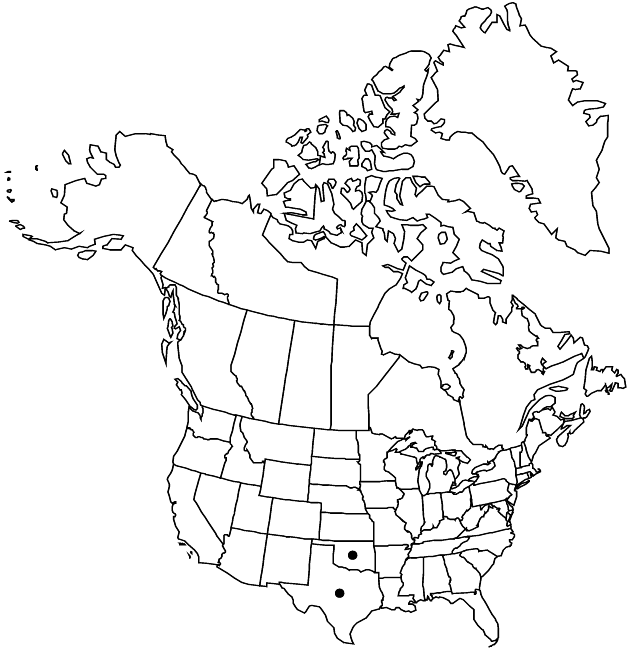Erigeron geiseri
Wrightia 1: 183. 1947.
Annuals, 5–40 cm; slenderly taprooted, caudices simple. Stems erect (herbaceous), sparsely spreading to deflexed-villous proximally, sparsely strigose (hairs straight) distally, eglandular. Leaves basal (usually not persistent) and cauline; basal blades oblanceolate to subspatulate, 15–60 × 4–11 mm, cauline gradually reduced distally (sometimes barely subclasping), margins entire or with 2–4 pairs of teeth or lobes, faces hirsute, eglandular. Heads 1–20 in diffuse arrays (branches from midstem distally, peduncles often dilated near heads). Involucres 2.5–3.5 × 5–7 mm. Phyllaries in 2–3 series, sparsely hirsute, sometimes minutely glandular. Ray-florets 44–70; corollas white, drying white to pink, 3–6 mm, laminae not coiling or reflexing. Disc corollas 1.2–1.6 mm (throats slightly indurate and inflated). Cypselae 0.7–0.9 mm, 2-nerved, faces sparsely strigose; pappi: outer of scales, inner of 9–11 bristles.
Phenology: Flowering late Mar–May(–Jun).
Habitat: Sandy prairies, sandy loam, clay, fields, roadsides, fencerows
Elevation: 10–200 m
Discussion
Erigeron geiseri is characterized by its annual duration and slender taproots, relatively small size, lobed basal leaves, peduncles often dilated near the heads, obovate phyllaries with broad, scarious margins, and relatively small disc florets and cypselae, the latter with pappi of conspicuous scales and relatively few bristles.
Selected References
None.
